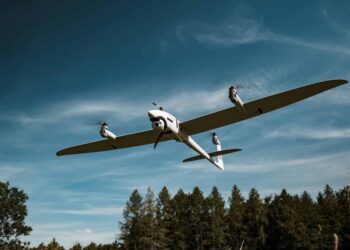US Air Force, WASHINGTON: The Air Force is looking to get a “next generation” long-range bomber by 2018, according to the commander of Air Combat Command.
During the Air Force Association's 2006 Air and Space Conference and Technology Exposition here Sept. 27, Gen. Ronald E. Keys, the ACC commander, told reporters the command is funded for a bomber, and it likely would be put together using some of the same advanced technology currently in the B-2 Spirit, the F-22 Raptor and the F-35 Lightning II.
“We have a lot of those technologies and you put those together into something that will look much like what you know as an airplane,” he said. “And you can make a next generation long range strike (aircraft.) In order to make 2018, you have to use the far end of the technology you have your hands on.”
The general said the Air Force would not see the next “great leap” in bomber technology until around the 2030 to 2040 timeframe. Then, he said, the Air Force may see “hypersonic” capability — aircraft capable of flying at a speed of about Mach 5.
For other weapons systems that use hypersonic technology, the general said the command would have to consider cost verses benefit before making a commitment to buy.
“Hypersonics are cool things, but what do I get out of it,” he asked. “If I am there, with my persistent force, I can engage anything in seven minutes. If I had hypersonics, it would get me down to three minutes. But the people I want to kill can get away in the first two minutes. Am I willing to pay x billions of dollars for hypersonic weapons that don't solve my problem? Those are the harsh decisions we have to make when people come to us with great technology.”
Hypersonic weapons are being researched by the U.S. military today. The weapons can travel at speeds above Mach 5 and can generally hit any target on Earth within hours of being launched. General Keys said ACC is interested in the weapons and is researching things such as the types of engines required, the kinds of metals that would needed, the kinds of rules that would be applied to their use and how weapons could be launched off hypersonic platforms.
While General Keys said he wasn't ready to commit to hypersonic weapons immediately, he did not rule them out. “I want a hypersonic thing to do a specific thing at a price I can afford with technical risks I am willing to take,” he said.
With the F-22, and with the F-35 on the horizon, the Air Force must consider when it will phase out the F-15 Eagle and F-16 Fighting Falcon programs. For now, General Keys said the Air Force will keep many of these aircraft around.
General Keys said ACC plans to upgrade about 178 of the command's best F-15 aircraft with the electronically scanned array antennas radar. Additionally, the command plans to upgrade other F-15s with the joint helmet mounted cuing system.
For the F-16 aircraft, ACC has invested in service-life extensions and is finishing up on the common configuration improvement program for the Block 40 and Block 50 F-16s. The general said the upgrades will allow those aircraft to do suppression missions and use advanced targeting pods.
Germany says adding explosive drones to weapons arsenal
Germany said Friday it would buy explosive drones for the first time as Berlin boosts investments in its armed forces...









